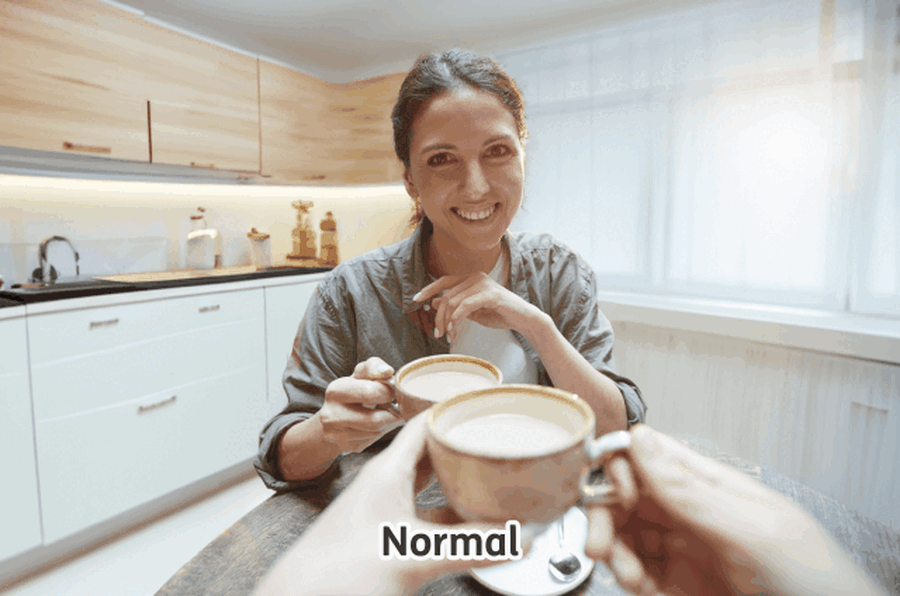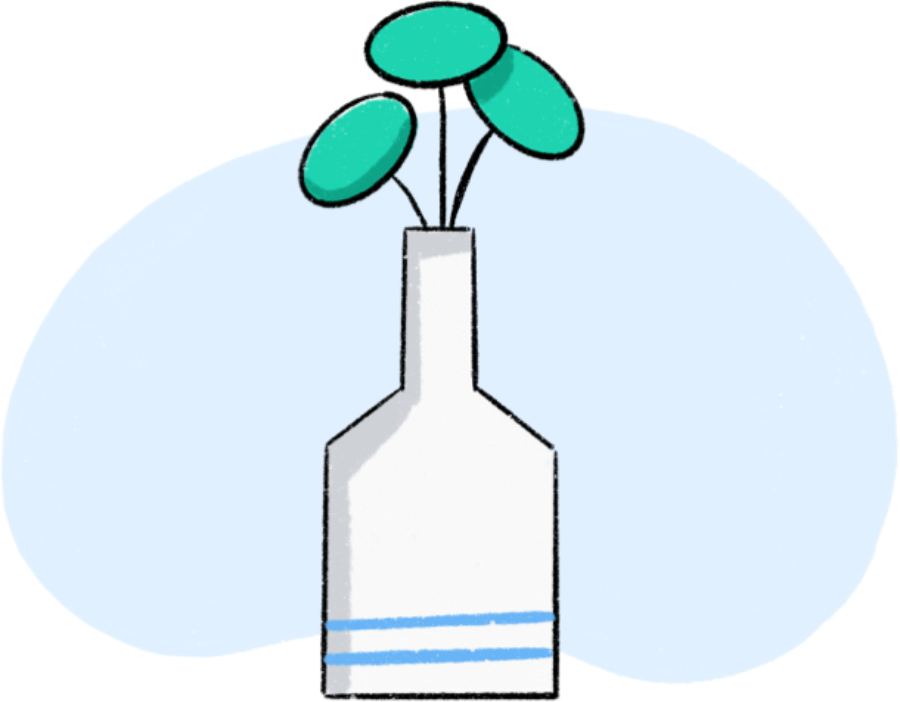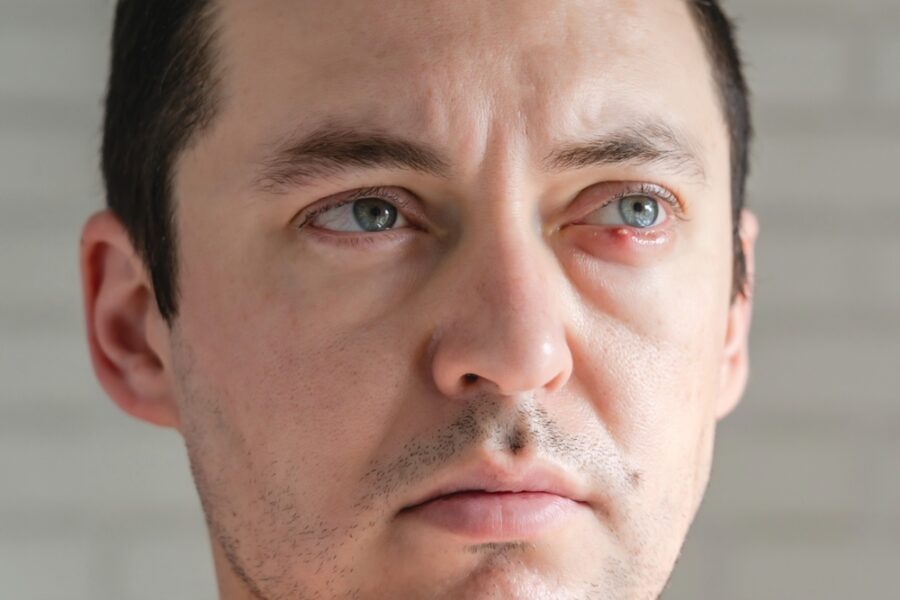

Blog post
Age-related macular degeneration

Matthew Burford BSc(Hons) Optometry MCOptom - Domiciliary Optician and Professional Services Manager at OutsideClinic
6 minute read time
What is age-related macular degeneration?
Age-related macular degeneration, or AMD for short, is an age-related eye condition that can develop as we get older.
It affects the macular, which is the part of the eye that processes what you can see directly in front of you (your central vision).
AMD can result in a profound loss of detailed vision. This can make it difficult to read, cook, spot hazards, recognise faces and other actions most of us take for granted.
Different types of AMD
There are two types of AMD; wet and dry.
Dry Age-Related Macular Degeneration (Non-neovascular)
This is the most common form of AMD, accounting for about 85-90% of cases.
Vision loss is usually gradual, and it may take years for the disease to affect your vision significantly.
Wet Age-Related Macular Degeneration (Neovascular)
Wet AMD is less common, but it's often more severe and accounts for most cases of serious AMD-related vision loss.
We call it 'wet' because abnormal blood vessels grow under the macula and can leak fluid and blood. This can cause scarring and damage to the macula, leading to rapid and severe vision loss.
What does vision with AMD look like?
AMD can cause a loss of central vision, making it difficult to read or see fine details.
To start with, it may result in a blurred or distorted spot in your vision. But as it gets worse, you may completely lose the middle of your vision.

What causes macular degeneration?
The exact cause remains a mystery, but many believe it results from the aging and thinning of macular tissues.
In the case of wet AMD, the growth of abnormal blood vessels under the retina is a key factor.
What are the symptoms?
Symptoms may include:
- Blurring of central vision
- Objects appear odd sizes and shapes
- Straight lines may appear curvy or fuzzed
- Lights, colours and shapes may appear to be there when they aren’t
- Advanced AMD can cause a blank or dark patch in the middle of your sight
- Reading, watching TV and identifying faces become difficult

What are the signs of AMD to watch for in a loved one?
Being aware of the early signs of AMD can help in managing its progression and maintaining better vision health. Here’s some things to watch out for if you suspect a loved one, or someone you care for, may be developing this condition.
- Difficulty recognising faces
- Not eating food in the middle of the plate
- Missing words or letters when reading
- Trouble seeing in low light conditions
- Squinting or tilting their head to see better
How can I help someone with AMD?
- Sit slightly to the side of the individual when talking to them so that they can see you in their peripheral vision
- Consider putting food at the side of their plate, as it's the central vision that tends to be affected first
- Remove potential obstacles and trip hazards
- Ensure there is good lighting, particuarly for tasks like reading and eating
- Ensure regular eye tests to monitor the progression of AMD and arrange appropriate treatment
Who is more at risk?
Certain factors can increase your chances of developing AMD, but they don't guarantee that you will get the condition:
- People over the aged of 50
- People with AMD in their family (certain genes, known to pose a higher risk of AMD, suggest a genetic component to the disease)
- Smokers
- Caucasian people
- People who have a diet high in saturated fat and cholesterol
- People who have high blood pressure and cardiovascular disease
- People with obesity
- People who have prolonged sun exposure
Is macular degeneration hereditary?
Age-related macular degeneration (AMD) can have a genetic component.
Certain genes linked to the immune system and other functions can result in an increased risk of developing AMD. People believe that variations in these genes increase the risk of AMD by affecting the body's immune response, inflammation regulation, and other functions.
However, not everyone who has these gene variations will develop AMD, indicating that other factors, such as environmental influences and lifestyle choices, also play an important role in the development of the disease.
So, while having a family history of AMD can increase your risk, it does not guarantee that you will develop the condition.
Can you cure or reverse AMD?
There is no cure for AMD, but lifestyle changes and supplements can slow its progression and help preserve vision.
What’s the treatment?
There are treatments that can slow the progression of the disease or improve vision based on the type of AMD.
Treatment for dry AMD
A large study found that a specific high-dose formulation of antioxidants and zinc significantly reduces the risk of advanced AMD and its associated vision loss.
Opticians currently recommend this for patients with intermediate or advanced dry AMD.
Regular eye exams are also crucial to monitor the condition.
Treatment for wet AMD
The primary treatments for wet AMD include injecting anti-vascular endothelial growth factor (anti-VEGF) drugs into the eye. These drugs block the growth of new abnormal blood vessels that cause wet AMD.
Laser surgery is another treatment for some types of wet AMD. It involves aiming an intense “hot” laser at the abnormal blood vessels in the eyes to destroy them. However, this treatment is less common than anti-VEGF drugs.
In all cases, maintaining a healthy lifestyle, including regular exercise, a diet high in fish and green leafy vegetables, and avoiding smoking can help slow the progression of AMD.
Vision aids can also be helpful for those with vision loss from AMD, such as special eyeglasses, magnifying glasses, large-print reading materials, and electronic devices that can magnify reading material.

How to prevent macular degeneration
While there is no guaranteed way to prevent age-related macular degeneration (AMD), certain lifestyle changes may reduce your risk or slow the progression if you already have the disease. These include:
- Regular exercise: Regular physical activity can reduce your risk of AMD.
- Healthy diet: Eating a diet rich in fruits, vegetables, lean meats, and fish (particularly those high in certain vitamins and antioxidants like vitamins C and E, zinc, lutein, zeaxanthin, and omega-3 fatty acids), may lower the risk of AMD.
- Avoid smoking: Smoking significantly increases the risk of AMD and can speed up its progression.
- Control blood pressure and cholesterol: High blood pressure and high levels of cholesterol can increase your risk of AMD.
- Wear sunglasses: Protecting your eyes from the sun's harmful ultraviolet (UV) and high-energy visible (HEV) or "blue" light may also help to prevent AMD.
- Regular eye exams: Regular eye exams can help detect AMD in its early stages.
- Maintain a healthy weight: Obesity increases the risk of AMD.
- Limit alcohol consumption: Excessive drinking contributes to AMD.
Remember that while these steps can help reduce the risk of AMD, they cannot eliminate it completely. We cannot control factors such as genetics and aging.

Is macular degeneration a disability?
If AMD significantly impacts a person's visual function and ability to perform daily activities, in some cases, it can be considered a disability.
However, eligibility for disability benefits, such as the Personal Independence Payment (PIP), vary by local council.
Can I drive with macular degeneration?
AMD can make it unsafe for you to drive. Your optician or GP will be able to advise if they think you should stop driving.
You're required by law to tell DVLA about your condition if:
- it affects both eyes or
- it only affects 1 eye but your remaining vision is below the minimum standards of vision for driving
You should meet the visual standards if you can:
- read a number plate from 20 metres away and
- have no double vision and
- have a normal field of vision in at least one eye
If you’re not sure if you meet these standards, your optician will be able to give you some guidance.
For up-to-date guidance, visit the gov.uk website.
What support is available?
The Macular Society offers comprehensive support for individuals affected by macular disease through a variety of services:
- Advice and Information Service: Accessible via phone (0300 3030 111) or email (help@macularsociety.org), providing expert guidance on managing macular conditions.
- Online Resources: The society's website (macularsociety.org) features a wealth of information and resources to help individuals understand and cope with macular disease.
- Peer Support Groups: Over 300 groups across the UK offer emotional and practical support, allowing people to connect with others facing similar challenges.
- Counselling and Befriending Services: Free, confidential counselling and regular friendly phone conversations through the Telephone Befriending Service help reduce feelings of isolation.
- Treatment Buddies and Skills Training: Connects individuals with experienced peers for support during treatment and offers training to enhance visual skills.
These services are designed to provide practical help and emotional support to enhance the quality of life for those living with macular conditions.

By Matthew Burford BSc(Hons) Optometry MCOptom - Domiciliary Optician and Professional Services Manager at OutsideClinic
Matthew graduated from Aston University in 2004 with a degree in Optometry.











